Ilkeston Town Walk - Stage 09 - Cluny Lace Co Ltd
w/e 04 May 2003
The answer to the poser in Stage 08 of the Town Walk
is of course "LACE" and the factory on Belper Street
is owned and managed by the eighth and ninth generations of the
Mason family. It goes by the name of Cluny Lace and the company
has been the proud manufacturers of the finest Leavers lace since
1845.
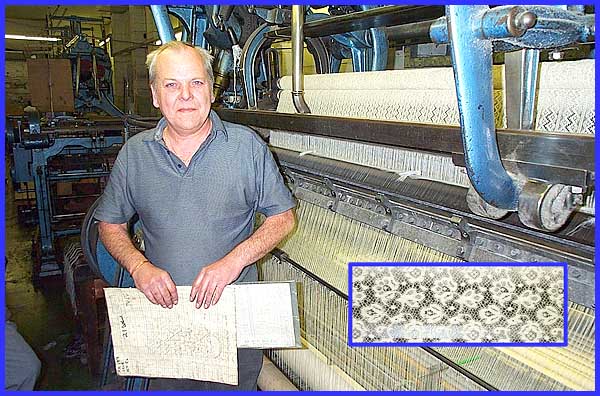
Our guide, John, took time off from his normal duties to show
my wife Sandra and myself, around one of the workshops on the
ground floor. John is seen here clutching one of the intricate
patterns that he uses to set up the machines, the inset shows
the result of his labours as it appears on the machines.
|
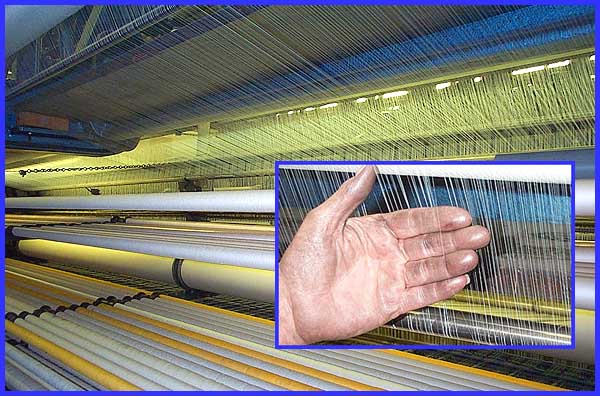

|
I provided three clues in Stage 08, the first
being an Egyptian import. That was the fine cotton thread that
is used in the manufacture and the view above is from the rear
of one of the machines. Cotton accounts for over 95% of the material
used in most of the laces produced in the factory. Small amounts
of polyester and nylon are used in some of the products.
|
|
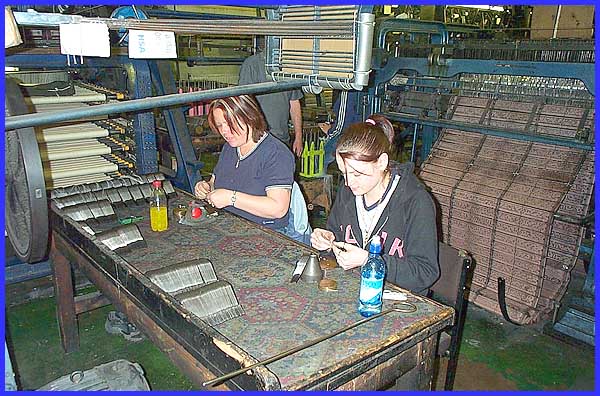

|
Hundreds of the "metal objects", the second
clue, are used on the machines after being fitted with discs
holding the thread to become the bobbins. You can see them stacked
up on the table in the photo as they are prepared for the machines.
With the bottles of orange and water on the table, it looks like
thirsty work!
|
|
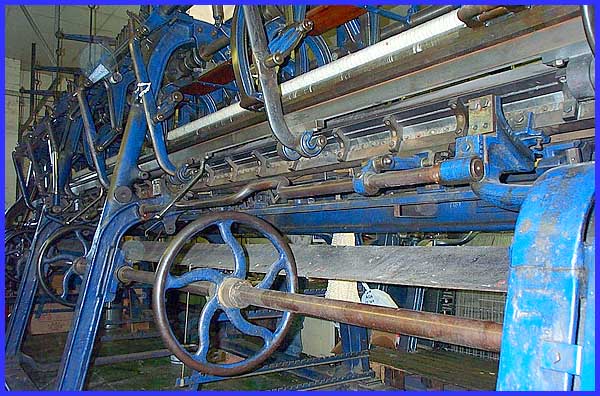

|
The third clue was the name of John Jardine on one
of the machines. All six of the machines in this workshop were
manufactured for export by John Jardine of Nottingham which is
less than ten miles away. Cluny Lace have rescued, re-imported,
renovated and refurbished them for use in this factory in Ilkeston.
The one above is still in need of some work but will soon be
in production too.
|
|
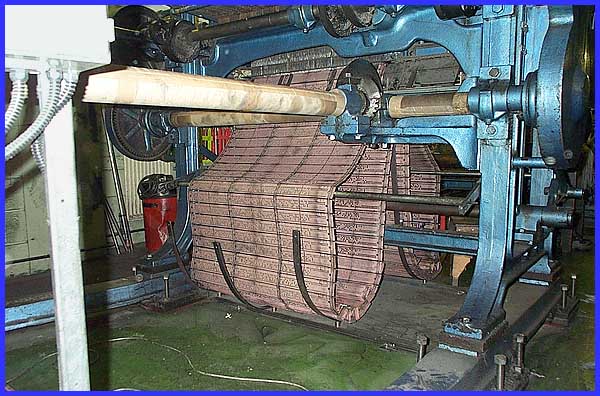
To produce the intricate patterns on the lace the bobbins are
jiggled back and forth by means of thin metal rods or plates
that run along the length of the machine. They are programmed
to move by a punched card system similar to those that are often
seen on old fairground organs.
|
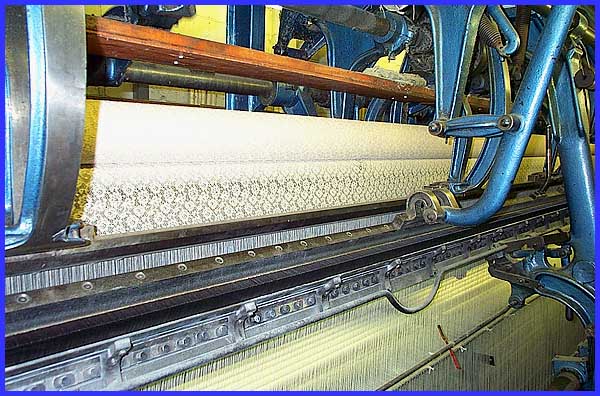
Of the six machines in the workshop, one came from France, one
from the USA, two from Austria and two, including the biggest
ever made, from Canada. When fully laden each machine weighs
about 20 tons. It is easy to understand why they are on the ground
floor. The next floor up has medium sized machines and there
are small machines on the third storey. I marvelled at the ingenuity
of the designers of these machines for although the two largest
were built in 1960 and 1962, the original design dates back to
the early nineteenth century. They started out as steam powered
machines, then generators were used before their progression
to computer controlled electrically. Just moving with the times.
As a bonus to this Stage of the Town Walk, you can click on the
image below to see a panoramic view of the whole workshop. All
that remains is to extend our thanks once again to the company
for giving us the opportunity to see lace making at close quarters
and to John for showing us around. If you would like to know
more about the history of the Cluny Lace Co Ltd, please click on the name
to visit their web site.

|







